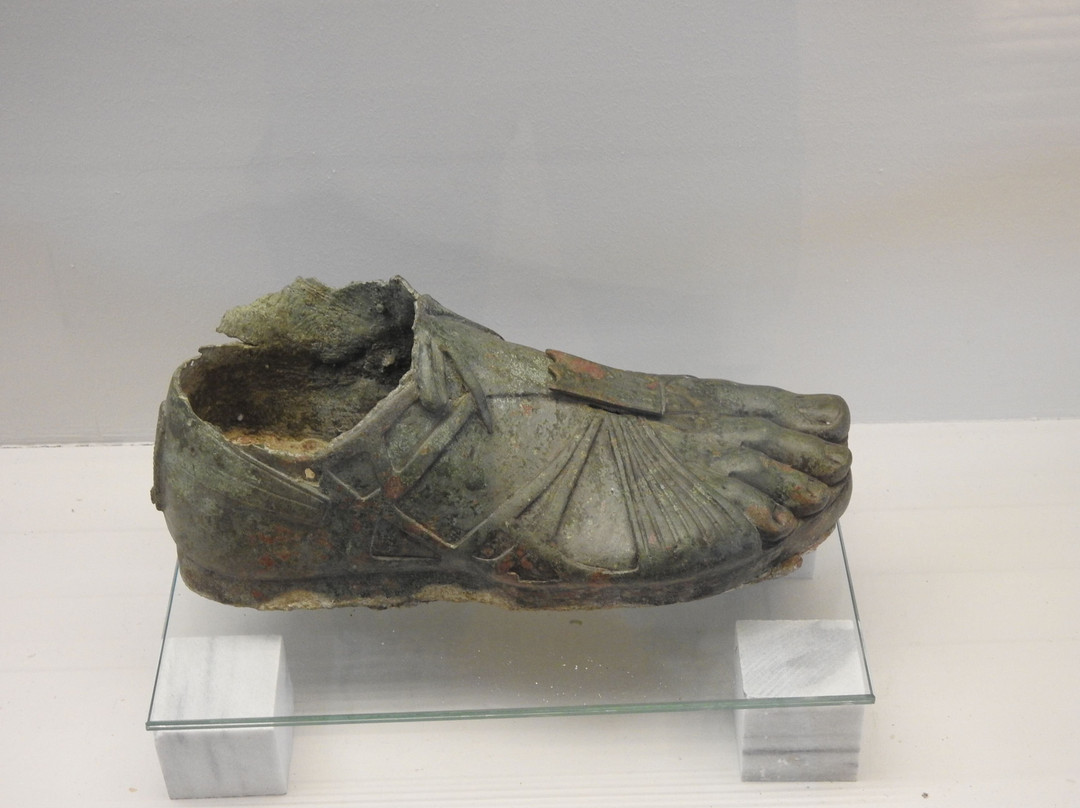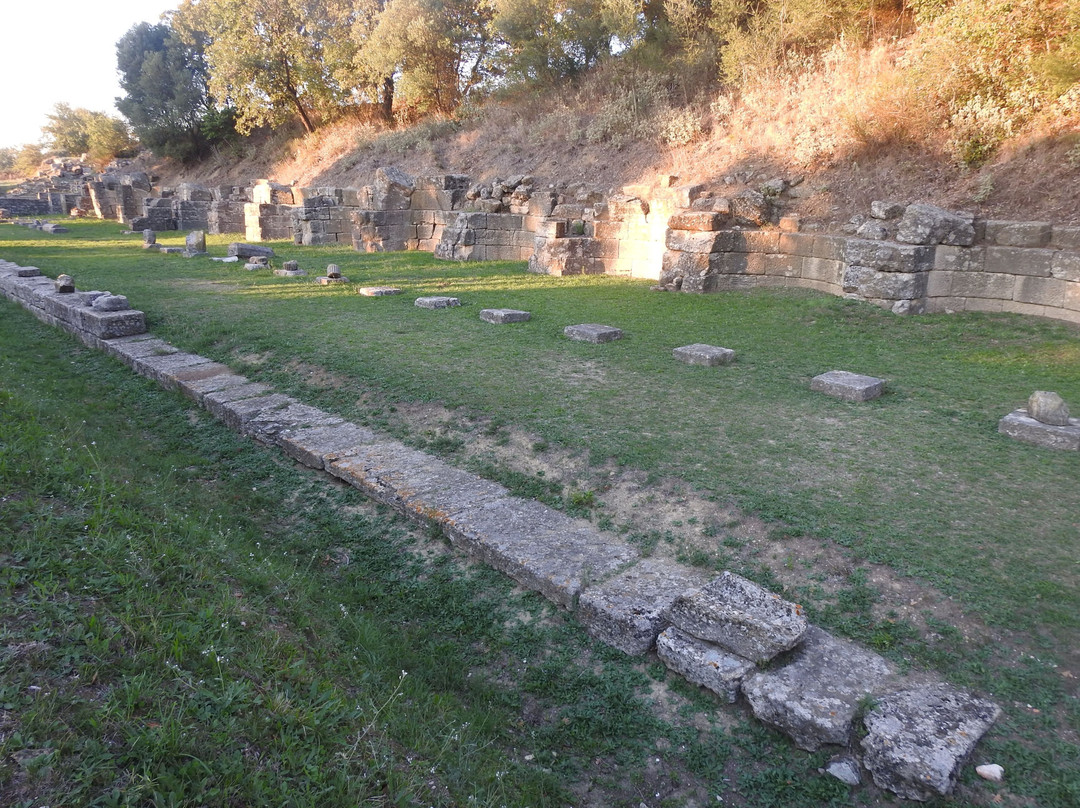的点评
An ancient city rich in history
Apollonia Archaeological Park的点评
点评:Coming from the south, the directions took us to the Apollonia visitor parking area, a large parking but at 700 m from the site which is located higher up. We then went back with the car and, having reached the village of Pojan, we followed the signs until the entrance to the site where parking is free as well. Having paid the entrance cash in euros, as it was evening, we immediately went to visit the small museum (in the upper floor of the monastery) which closes before the rest of the site. Not far from the museum there is St Mary's Church, the stone statue exhibition room and the toilets too. Founded around 600 BC by Greeks, Apollonia is located on a very large area where both Greek and Roman remains can be admired. In fact the city flourished in the Roman period, becoming a large one till its harbor was destroyed by an earthquake. At the beginning of the visit you reach the Greek sector with the Agora gate and the Odeon, the ancient Greek theater. Less preserved, but interesting are the remains of the portico and the nymphaeum. As we continued our visit to the site, we saw several Hermann’s tortoises (Testudo hermanni) among the grass. The rest of the ruins are scattered over a large area and their state of conservation is poor so it depends on personal interest to proceed with the visit under the sun even reaching the acropolis, as we have done. Bring with you a bottle of water as well as a hat (there is a bar/restaurant at the entrance of the site). An interesting visit that can last a couple of hours.
翻译:我们从南边出发,按照指示前往阿波罗尼亚游客停车场,这是一个大型停车场,但距离位于较高位置的遗址有 700 米。然后我们开车返回,到达 Pojan 村后,我们沿着路标一直走到遗址入口,那里停车也是免费的。由于当时是晚上,我们用欧元现金支付了入场费,然后立即前往参观小型博物馆(位于修道院的上层),该博物馆比遗址的其他地方更早关闭。博物馆附近有圣玛丽教堂、石像展览室和厕所。阿波罗尼亚由希腊人在公元前 600 年左右建立,位于一个非常大的区域,可以欣赏希腊和罗马的遗迹。事实上,这座城市在罗马时期非常繁荣,直到它的港口被地震摧毁,它才成为一个大城市。在参观开始时,您会到达希腊区,那里有 Agora 大门和古希腊剧院 Odeon。保存较差但有趣的是门廊和宁芙神庙的遗迹。当我们继续参观该遗址时,我们在草丛中看到了几只赫尔曼陆龟(Testudo hermanni)。其余的遗址分散在一大片区域,保存状况不佳,因此,是否在阳光下继续参观甚至到达卫城取决于个人兴趣,就像我们一样。带上一瓶水和一顶帽子(遗址入口处有一家酒吧/餐厅)。一次有趣的参观可以持续几个小时。











此点评仅代表旅行者个人的主观意见,并不代表TripAdvisor以及其合作方的意见。
关于我们
|新闻动态
|商务合作
|会员中心
|业主中心
|常见问题
|意见反馈
|联系我们
|营业执照
© 2025 Tripadvisor 版权所有。
使用条款 |隐私政策 |网站工作原理
部分照片由 VFM Leonardo 提供。
* Tripadvisor不是旅行社,也不是旅游预订服务代理商。我们提供免费、客观、公正的旅游资讯服务。 (显示更多)
TripAdvisor LLC 既不是预订代理商,也不是旅游运营商,不会向网站用户收取任何服务费。 按照规定,在 Tripadvisor 发布机票价格、游览和旅行套餐的合作伙伴(航空公司、旅行提供商及预订代理商),其标价须包含所有费用和附加费用。 例如, 机场出入境税费、消费税与其他服务费、手续费、杂费及附加费用。 当您向我们的某个合作伙伴进行预订时,请务必查阅他们的网站以了解当地行政部门要求的所有适用费用的具体情况。 除非另有说明,机票价格通常指的是一个人的价格(以人民币计)。
为方便起见,TripAdvisor LLC 根据从我们的预订合作伙伴获取的空房率计算每个酒店的均价。 对于游览和景点来说,所显示价格通常是每位成人的最低可用价格。 对于列出的任何旅行套餐或优惠,TripAdvisor LLC 无法保证任何特定的费率或价格。 此外,酒店均价每晚会更新,并以您的首选币种表示(使用现行汇率)。 由于这些已换算的价格是预估价格,因此,有关具体金额和币种请与预订网站进行核实。
此外,TripAdvisor LLC 无法保证我们网站上宣传的价格随时有效。 标价可能需要预订一定天数才能生效,或有不可用日期、使用条件或限制。
TripAdvisor公司对外部网站的内容一概不负责。优惠价格中不含税和其他费用。
ICP证:沪B2-20200433
沪ICP备20013175号
 沪公网安备31010502005427号
沪公网安备31010502005427号鹰程信息技术(上海)有限公司
货币/国家及地区
¥CNY
中国

